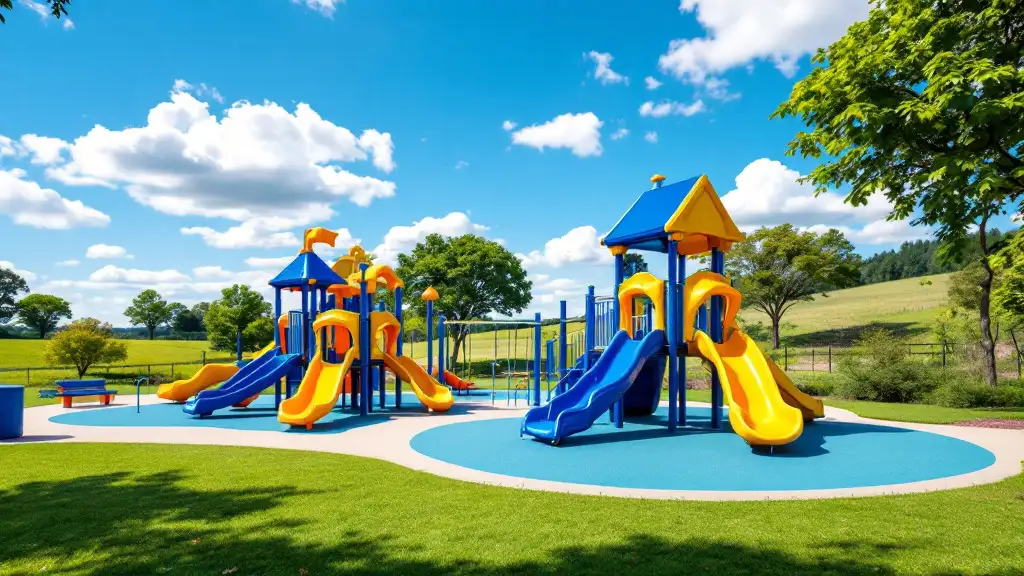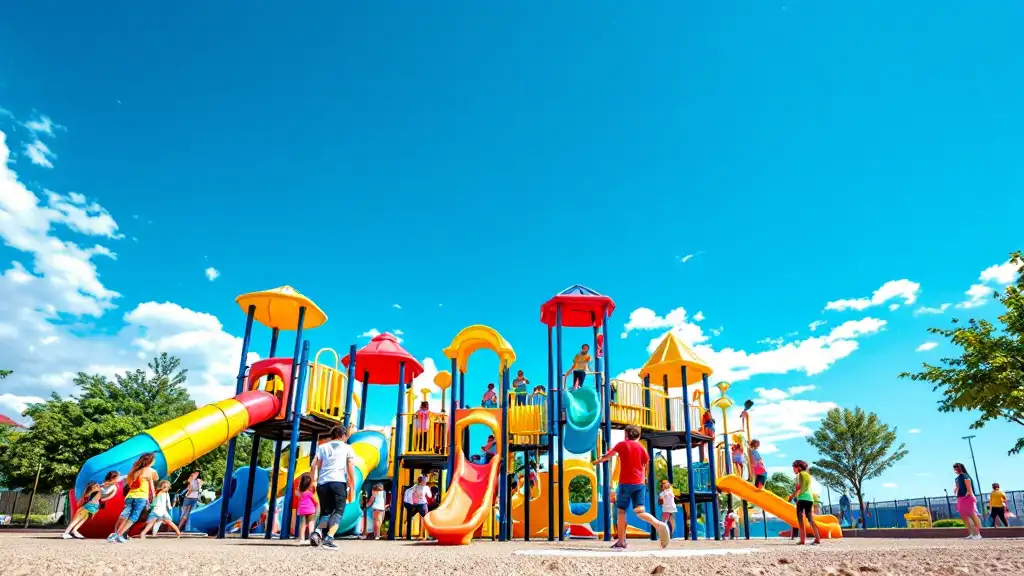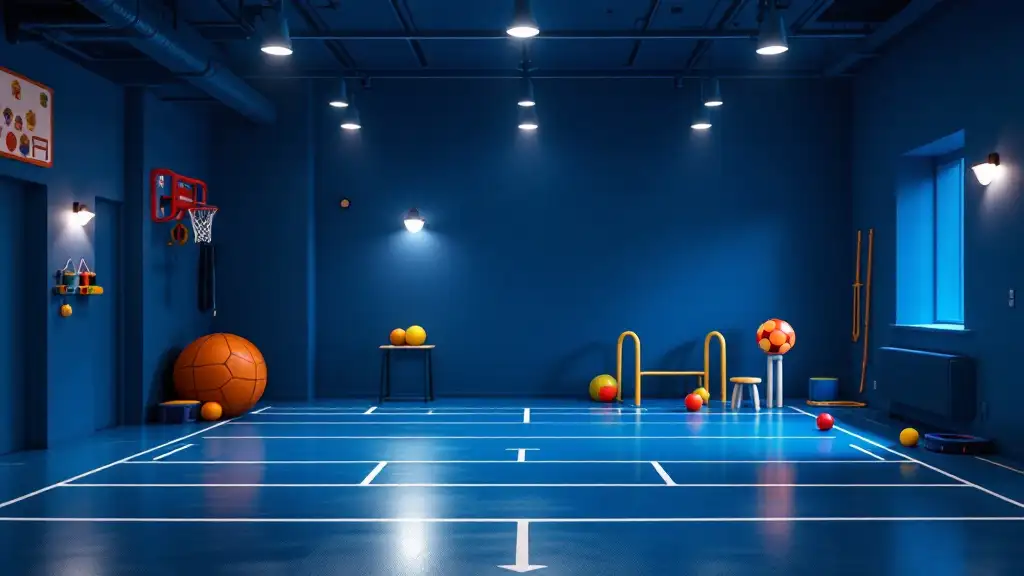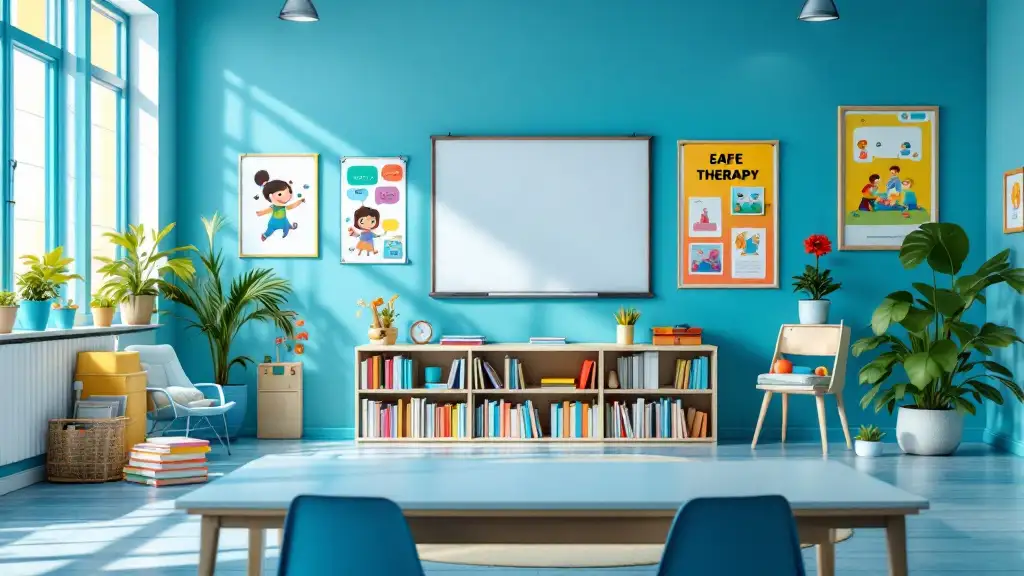
Unlocking Opportunities for All Students
Occupational therapy (OT) plays a crucial role in enhancing students' ability to participate fully in school activities. By addressing diverse developmental, physical, and emotional needs, OT fosters an inclusive environment where every child can thrive academically, socially, and functionally. This article explores the multifaceted role of occupational therapy in schools, including evaluation methods, intervention strategies, collaboration with educational frameworks, and evidence-based practices, with a focus on maximizing participation for children facing various challenges.
The Role of Occupational Therapy in Promoting School Participation
What is the role of occupational therapy in supporting children's participation in school activities?
Occupational therapy (OT) in schools is fundamentally focused on helping children engage fully in their educational environment. By systematically assessing each student’s unique needs, OTs identify specific challenges that may hinder participation, such as motor difficulties, sensory processing issues, or social-emotional barriers.
Evaluation involves observing students during classroom activities, administering standardized assessments, and collaborating with teachers and parents. These evaluations help form a comprehensive understanding of the student's strengths and areas needing support. Based on this information, occupational therapists develop personalized intervention plans tailored to each child's goals and needs.
Therapists work closely with the educational team to implement strategies that improve motor skills (like handwriting or coordination), social interaction, self-care tasks, and attention management. Their goal is to enhance the child's ability to participate in tasks such as writing, using classroom tools, self-feeding, dressing, and engaging with peers.
Beyond individual skills, OTs focus on modifying the environment to promote inclusion. This can include recommending ergonomic tools, creating sensory-friendly spaces, or adjusting classroom layouts. In some cases, they suggest the use of assistive technology or adaptive equipment to support learning and participation.
Occupational therapists also support children’s overall well-being by providing guidance on routines at home, fostering healthy habits related to sleep and nutrition, and reducing stress related to school activities. These efforts contribute to a holistic approach that aims to improve academic outcomes, social skills, and mental health.
Moreover, OTs support a child's transition to post-secondary education or employment by developing skills like organization, problem-solving, and self-advocacy. The collaborative support from occupational therapists helps children with developmental, behavioral, or physical challenges reach their full potential in the school setting.
How do occupational therapists develop individualized plans?
The development of a personalized intervention plan begins with thorough assessment and observation. Using tools like the Sensory Profile™, Beery-Buktenica Developmental Test of Visual-Motor Integration, and informal observations, therapists gather data on a child's sensory processing, motor, perceptual, and social abilities.
Following evaluation, the OT team, including teachers and parents, collaborates to set achievable goals aligned with the child's educational and personal aspirations. These goals are reviewed and adjusted at least once a year to ensure ongoing relevance and progress.
The intervention strategies employed are activity-based, emphasizing real-life skills such as handwriting, self-regulation, social participation, and daily routines. Therapists often use a top-down approach, focusing on participation in meaningful activities within the natural environment.
Implementation may include direct therapy sessions, consultation with teachers for classroom accommodations, and training for parents to reinforce skills at home. This comprehensive planning ensures that each child receives targeted support that promotes independence and success.
How do OT services improve motor, social, and self-care skills?
Occupational therapy employs various activities and techniques to foster improvement in essential developmental areas. For motor skills, interventions include exercises to strengthen hand muscles for handwriting, activities to improve bilateral coordination, and balance exercises.
Sensory integration techniques such as sensory diets or calming activities help children better manage sensory input, which can improve self-regulation and focus.
Social skills are enhanced through structured social interaction activities, role-playing, and teaching recognition of social cues. These strategies aim to develop communication, cooperation, and emotional regulation.
Self-care skills are addressed by teaching routines like dressing, grooming, and organizing school supplies. Therapists may provide adaptive tools and strategies to make self-care more manageable, fostering independence.
How is collaboration with educators, parents, and healthcare professionals essential?
Successful OT in schools depends heavily on teamwork. Occupational therapists work with teachers to adapt instructional methods and classroom environments, ensuring accessibility for all students.
Training and consultation empower teachers to implement strategies like visual schedules or sensory breaks, which support student participation.
Parents are involved through guidance on reinforcing skills at home, managing routines, and supporting behavioral goals.
Healthcare professionals, including speech therapists, physical therapists, and psychologists, collaborate to provide a comprehensive support system addressing a child's multifaceted needs.
This multidisciplinary approach promotes consistency across settings, tracks progress, and adjusts interventions to maximize impact.
How do occupational therapists contribute to creating supportive classroom environments?
OTs recommend and implement environmental modifications tailored to individual needs. Examples include adjustable seating, sensory-friendly areas, visual cues, and accessible materials.
They suggest classroom strategies, such as flexible seating options, movement opportunities, and quiet zones, to help children self-regulate and remain focused.
By fostering an inclusive environment, OTs help reduce barriers to participation for children with disabilities or sensory sensitivities.
Overall, occupational therapy in schools strives to create settings where every child can access learning comfortably and confidently, encouraging positive behavioral engagement and academic achievement.
Assessment Methods in School-Based Occupational Therapy

What are the evaluation and assessment methods used in school-based occupational therapy?
School-based occupational therapy relies on a variety of assessment methods to understand each child’s unique needs, strengths, and areas needing support. One primary approach involves observing the child's performance within natural school environments such as classrooms, playgrounds, and lunchrooms. These naturalistic observations allow therapists to see how children function during typical daily activities and social interactions.
Standardized assessments are also a critical component. Tools like the Beery-Buktenica Developmental Test of Visual-Motor Integration help evaluate visual-motor skills, while the Sensory Profile™ provides insights into sensory processing patterns. These assessments quantify specific skills, identify challenges, and guide targeted interventions.
Functional evaluations assess a child's independence with daily activities, such as dressing, self-care routines, handwriting, and classroom participation. These evaluations help determine how children manage in their routines and what modifications might support their success.
Reviewing a child's developmental history provides context for current abilities and developmental milestones. Input from teachers and parents adds valuable perspectives, ensuring a comprehensive view of the child's functioning across settings.
Environmental analysis within the school setting is essential to identify physical and sensory barriers that may hinder participation. This includes assessing classroom layout, furniture, sensory accommodations, and access to assistive technology.
Monitoring progress through subsequent assessments is crucial. Regular re-evaluations help track improvements, adjust strategies, and ensure that therapy goals are being met effectively.
Overall, these assessment methods create a holistic picture of the child's functional abilities, challenges, and needs—forming the foundation for personalized intervention planning. They enable therapists to develop strategies that support motor coordination, sensory integration, social skills, and independence, fostering successful participation in academic and social activities.
| Method of Assessment | Purpose | Typical Tools or Techniques |
|---|---|---|
| Observation in natural settings | Understand real-life functioning | Therapist notes, video recordings |
| Standardized assessments | Measure specific skills | Beery-Buktenica, Sensory Profile™ |
| Functional evaluation | Assess independence in daily tasks | Task analysis, checklists |
| Developmental history review | Gather background info | Interviews, developmental records |
| Input from teachers and parents | Gain multi-environment perspective | Questionnaires, interviews |
| Environmental analysis | Identify physical and sensory barriers | Environmental checklists |
| Progress monitoring | Adjust interventions based on progress | Re-evaluation tools, session notes |
This comprehensive assessment approach ensures that interventions are well-informed and tailored to each child's evolving needs, ultimately supporting their success across academic, social, and daily life skills.
Interventions and Treatment Strategies Employed by Occupational Therapists
What treatment approaches and interventions do occupational therapists employ in educational settings?
Occupational therapists (OTs) utilize a variety of strategies tailored to support children's participation and development within the school environment. A central approach involves sensory integration techniques, which are designed to help children process sensory information more effectively. These include sensory diets—personalized activity plans—and sensory tools like weighted vests, therapy balls, or noise-canceling headphones to regulate sensory input.
For children with motor skill challenges, OTs incorporate motor development activities focusing on handwriting, coordination, and fine motor skills. They often use specialized tools and adaptive equipment, such as ergonomic pencils, pencil grips, and assistive technology, to help children improve their handwriting and manipulate objects comfortably. Environmental modifications, including adjustable desks, visual cues, and organized classroom layouts, further support motor skill development and task completion.
Collaboration with teachers plays a vital role in effective intervention. Occupational therapists work alongside educators to modify classroom activities, adapt materials, and implement accommodations that cater to each child's unique needs. This may involve breaking tasks into manageable steps, providing visual schedules, or using alternative methods for tasks like writing or cutting.
Beyond physical and sensory interventions, OTs address cognitive and behavioral challenges by teaching self-regulation, attention strategies, and social skills. They may introduce movement-based breaks, mindfulness activities, or structured routines to enhance focus and emotional regulation.
Overall, these interventions aim to foster independence and success in academic tasks while promoting social participation and emotional well-being. By addressing individual sensory, motor, cognitive, and emotional needs, occupational therapists help children overcome barriers and thrive in their schooling experience.
Benefits and Outcomes of Occupational Therapy for Students

What benefits and outcomes can be achieved through occupational therapy for students?
Occupational therapy (OT) in schools provides a wide range of positive impacts that help children succeed academically, socially, and emotionally. One of the primary benefits is the development of motor skills, which are essential for handwriting, self-care, and participation in activities like sports or playground play.
For example, OTs work on fine motor skills — including pencil grip, hand strength, and hand-eye coordination — that are crucial for completing classroom tasks efficiently. They also address gross motor skills, such as walking, jumping, and balancing, to ensure children can move confidently within the school environment.
Beyond motor skills, OT enhances sensory processing, enabling students to better interpret and respond to sensory inputs like noise, light, touch, and movement. This improvement often results in better attention spans, reduced sensory overload, and calmer, more focused behavior during lessons.
OT also plays a vital role in fostering independence. Students learn self-care routines like dressing, eating, and organizing school supplies. Emotional regulation techniques taught by occupational therapists help children manage feelings of frustration or anxiety, contributing to a more positive classroom experience.
Furthermore, occupational therapy addresses specific academic and social challenges. For instance, students with handwriting difficulties, organizational issues, or social skills deficits often see notable progress. As they acquire strategies to overcome these hurdles, their confidence and participation increase.
Overall, students benefit from greater engagement in learning activities and social interactions. Increased self-confidence, independence, and emotional resilience are common outcomes, empowering children to participate fully in school life and beyond.
Summary of Benefits:
| Benefit Area | Specific Outcomes | Additional Notes |
|---|---|---|
| Motor Skills Development | Improved handwriting, coordination, balance | Supports academic tasks and physical activities |
| Sensory Processing | Better management of sensory input, reduced overload | Enhances focus and participation in noisy or busy environments |
| Independence and Self-care | Dressing, eating, organizational skills | Promotes self-sufficiency and daily routine management |
| Emotional Regulation | Reduced anxiety, better coping strategies | Leads to improved classroom behavior |
| Academic Support | Overcoming handwriting and organizational challenges | Results in better grades and class participation |
| Social Skills | Peer interactions, communication, cooperation | Fosters inclusion and friendship development |
| Overall Engagement | Increased participation, confidence, resilience | Contributes to positive school experiences |
In conclusion, occupational therapy significantly contributes to a child's holistic development, enabling them to thrive in educational settings and daily life.
Complementary Roles of Occupational and Physical Therapy in Schools
How do occupational therapy and physical therapy support school participation?
Occupational therapy (OT) and physical therapy (PT) work hand in hand to help students succeed in school. OT centers on fine motor skills, sensory processing, and self-care activities that are essential for classroom tasks and social interactions.
PT, on the other hand, emphasizes large motor skills, mobility, strength, and balance. This enables students to safely move around, participate in physical education, and engage in outdoor play.
Both therapies evaluate children individually to identify specific motor challenges. They then develop personalized plans that target each child's unique needs. This collaborative approach ensures that environmental modifications, adaptive tools, and activities are aligned to support full participation.
Focus on fine motor, sensory processing, and self-care (OT)
Occupational therapists assess and treat difficulties with skills like handwriting, using scissors, tying shoelaces, and self-help routines such as eating and dressing. They also address sensory processing issues that may affect attention, emotional regulation, or social engagement. Interventions include sensory diets, fine motor activities, and task modifications.
Focus on gross motor, mobility, strength, and balance (PT)
Physical therapists evaluate the student's movement skills, strength, and balance. They help improve walking, jumping, running, and other large movements. Their strategies include exercises, mobility aids, and environmental arrangements that optimize physical participation.
Assessment of individual motor challenges
Both OT and PT conduct thorough assessments to identify each child's strengths and difficulties. These might involve standardized tests such as the Beery-Vincent Test for visual-motor integration or sensory processing scales. The goal is to understand how motor challenges impact learning and participation.
Development of personalized intervention plans
Based on assessments, therapists create tailored intervention strategies. OT may focus on activities to enhance handwriting, self-regulation, or social skills, while PT may develop strength training, balance exercises, and mobility support. These plans are reviewed regularly and adjusted to meet evolving needs.
Collaborative efforts to support comprehensive participation
OTs and PTs often work together, sharing insights and coordinating interventions. They collaborate with teachers, parents, and other school staff to implement accommodations and adapt environments. This teamwork ensures children gain the necessary skills and confidence to participate fully in all school activities.
This comprehensive approach highlights the importance of both therapies in promoting a child's overall development and educational success. By addressing different yet interconnected motor skills, students benefit from a supportive, inclusive learning environment that fosters independence and engagement.
Integration of Occupational Therapy within Educational Support and Legal Frameworks

How does occupational therapy integrate with educational support systems and legal frameworks to promote participation?
Occupational therapy (OT) plays a vital role in schools by working within a comprehensive legal and support system designed to ensure all children have access to education and participate fully. This integration begins with collaboration among multidisciplinary teams, including teachers, school psychologists, speech-language pathologists, and occupational therapists.
These teams develop personalized accommodations and intervention strategies tailored to each student’s needs. For instance, an OT might recommend sensory diets, adaptive tools, or classroom modifications that help students succeed in their learning environment.
Legal mandates like the Individuals with Disabilities Education Improvement Act (IDEA), Section 504 of the Rehabilitation Act, and the Every Student Succeeds Act (ESSA) establish children’s rights to receive appropriate services, including occupational therapy. These laws ensure that eligible students can access specialized supports to address physical, cognitive, and emotional challenges.
Students with disabilities often require interventions that support their academic and social participation. Evidence-based practices employed by therapists—such as handwriting support programs, sensory processing techniques, and functional activities—are implemented within the confines of these legal frameworks to foster inclusion.
Furthermore, occupational therapists influence environmental modifications—like adjustable seating, sensory-friendly classrooms, or assistive technology—to remove participation barriers. They also advocate for natural integration of support in daily routines, promoting inclusive and equitable learning experiences.
The legal support mechanisms serve to legitimize and structure OT services in schools. This ensures that children not only receive necessary interventions but also benefit from a system that emphasizes social inclusion, support for diverse needs, and the development of independence.
In conclusion, the synergy of legal frameworks and support systems enhances occupational therapy's impact, creating an educational environment where all children have the opportunity to thrive academically, socially, and emotionally.
Evidence-Based Practices to Enhance School Participation

What evidence-based practices are effective in improving participation in school activities?
Implementing research-supported strategies is essential to foster student engagement and facilitate full participation in school. Among the most effective practices are social-emotional learning (SEL) curricula that teach emotional regulation, interpersonal skills, and resilience. These programs help students manage stress and interact positively, which enhances their social integration and participation.
Positive behavioral interventions, such as Positive Behavioral Interventions and Supports (PBIS), create structured environments that promote appropriate behaviors and reduce disruptions. PBIS emphasizes consistent reinforcement, clear expectations, and proactive approaches, leading to improved classroom behavior and increased participation.
Mental health programs grounded in evidence, utilizing techniques like Cognitive Behavioral Therapy (CBT) and resiliency training, support students' emotional well-being. When students feel safe and supported, they are more inclined to engage actively in learning activities.
Active and differentiated instruction approaches also demonstrate effectiveness. These methods include inquiry-based and project-based learning, which cater to diverse learning styles, increase motivation, and sustain interest. Tailoring activities to individual student needs helps overcome participation barriers.
Classroom modifications and assistive technology (AT) provide necessary accommodations for students with disabilities or sensory processing challenges. Tools like speech-to-text devices, visual schedules, and ergonomic furniture help ensure accessibility, thereby facilitating participation.
Assessment, staff training, and fidelity measures are crucial components of successful implementation. Regular evaluation of intervention fidelity ensures strategies are delivered as intended. Training teachers and staff on evidence-based practices guarantees consistency and maximizes impact.
Overall, combining scientifically validated approaches tailored to each student’s needs promotes greater involvement and academic success. Fostering a supportive, inclusive environment underpinned by research-backed strategies leads to meaningful improvements in school participation.
Supporting Transitions and Promoting Inclusivity
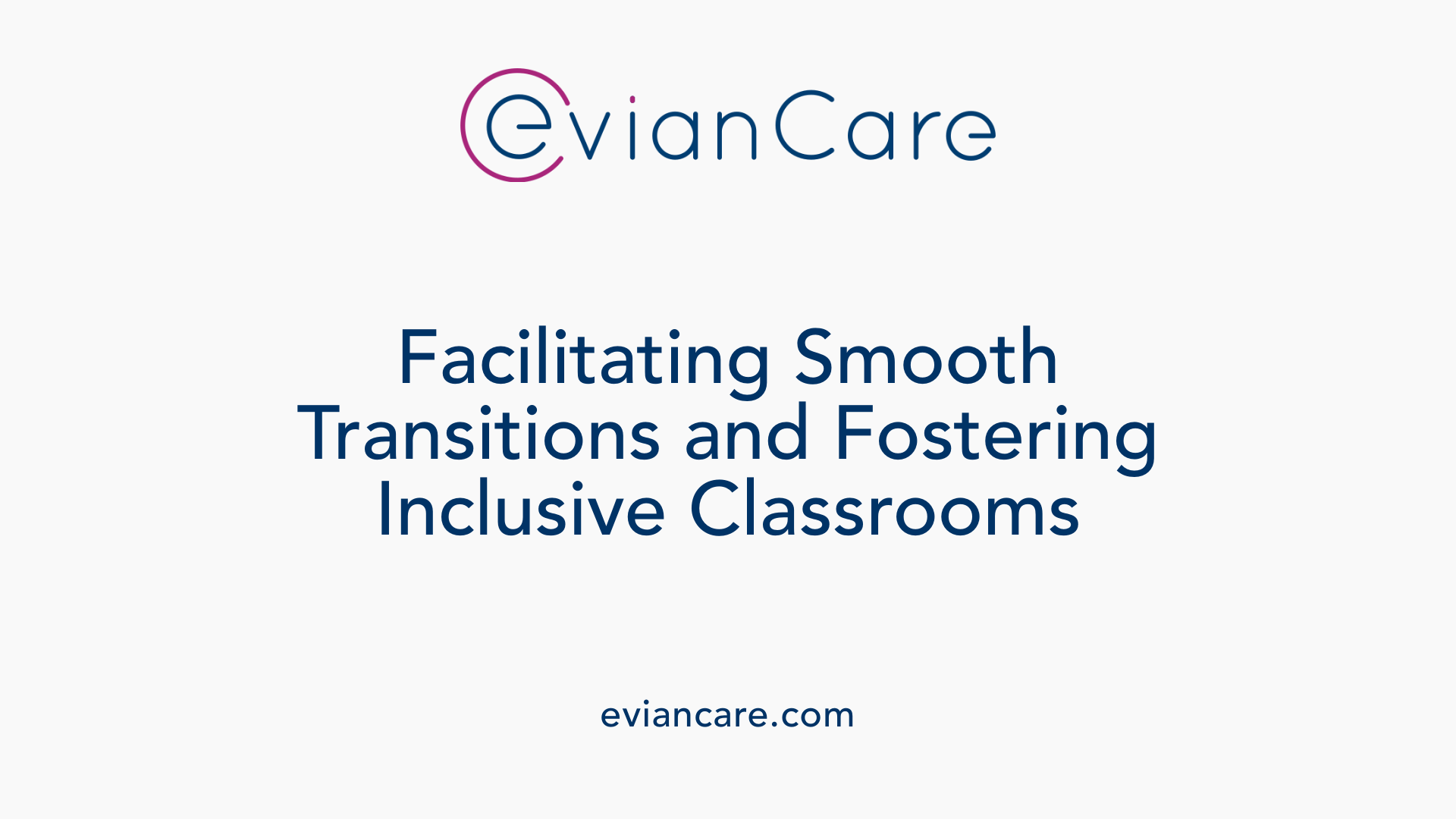
How does occupational therapy support transitions and promote inclusive education?
Occupational therapy (OT) plays a crucial role in helping students navigate various transitions within the school environment and beyond. Transition periods, such as moving from elementary to middle school or preparing for post-secondary education or employment, can be challenging for many students, especially those with disabilities or developmental delays.
OTs assist in developing independence and self-advocacy skills, enabling students to manage their routines, communicate their needs, and make choices confidently. By focusing on functional routines, they help students build self-reliance and reduce anxiety associated with change.
Environmental modifications are tailored during transitions to support students’ adjusting to new settings. For example, adjusting classroom layouts, providing sensory tools, or implementing visual supports can make unfamiliar environments more predictable and less overwhelming.
Training teachers and school staff is integral to successful transitions. Occupational therapists provide professional development on inclusive practices, sensory strategies, and universal design principles. This ensures that all students, regardless of their abilities, have equitable access to learning and social participation.
Fostering social participation and peer interactions is another vital element. OT interventions promote social skills, emotional regulation, and peer acceptance. Therapists often incorporate activities and strategies that help students read social cues, engage in cooperative play, and develop friendships, which are essential for social integration.
Through a holistic approach, occupational therapy ensures that students are not only prepared for successful transitions but also included fully in the school community. This supports their overall well-being, academic success, and readiness for lifelong participation in community and employment settings.
| Aspect | Focus Area | How OT Supports |
|---|---|---|
| Transition planning | Post-secondary and employment | Developing routines, independence skills, and environmental supports |
| Environmental modifications | During transitions | Adjusting physical and sensory environments for comfort and familiarity |
| Staff training | Inclusive practices | Educating staff on sensory strategies, accommodations, and universal design |
| Social participation | Peer interactions | Building social and emotional skills, facilitating peer support |
Occupational therapists serve as vital contributors in creating a seamless and inclusive educational journey, ensuring that every child's transition experience is positive, confidence-building, and supportive of lifelong success.
Empowering Education Through Occupational Support
Occupational therapy is integral to creating equitable, inclusive educational environments that accommodate diverse learner needs. By employing comprehensive assessments, evidence-based interventions, and collaborative practices aligned with legal frameworks, OT professionals help students overcome barriers and reach their full potential. The future of school-based OT hinges on ongoing research, interdisciplinary collaboration, and the commitment to fostering participation, independence, and success for all students, ensuring that every child has the opportunity to engage meaningfully in their educational journey.
References
- Occupational Therapy in Schools (Guide + Directory) - OT Potential
- School-Based Occupational Therapy Activities & Interventions
- Helping Students Succeed: School-Based Occupational Therapy
- Potential Role of Occupational Therapist Intervention in Elementary ...
- Occupational Therapy in Schools - The OT Toolbox
- [PDF] What is the Role of the School-Based Occupational Therapy ... - AOTA
- [PDF] School-based Occupational Therapy (OT) helps children succeed ...
- Understanding School-Based Occupational Therapy vs. Physical ...
- Interventions Within the Scope of Occupational Therapy to Improve ...
- Occupational therapy in schools - RCOT





